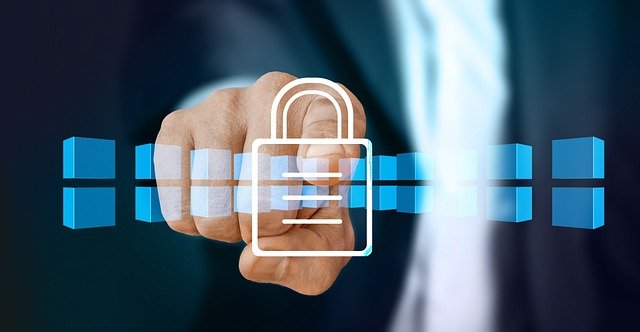Complete business protection: from modern computer threats to innovative future solutions
Cybersecurity has become a critical business necessity in today's digital landscape, where companies face an ever-evolving array of threats that can cripple operations, compromise sensitive data, and damage reputations. From small startups to large corporations across the Bahamas, organizations must understand that cybersecurity is no longer optional but essential for sustainable business operations. Modern cyber threats have grown increasingly sophisticated, targeting vulnerabilities in networks, applications, and human behavior to exploit valuable business assets.

What is cybersecurity and why is it important for your business?
Cybersecurity encompasses the practices, technologies, and processes designed to protect digital systems, networks, and data from unauthorized access, attacks, and damage. For businesses, cybersecurity serves as a digital shield that safeguards critical assets including customer information, financial records, intellectual property, and operational systems.
The importance of cybersecurity for businesses cannot be overstated. Cyber attacks can result in devastating financial losses, with the average cost of a data breach reaching hundreds of thousands of dollars when considering downtime, recovery efforts, legal fees, and regulatory fines. Beyond immediate financial impact, businesses face long-term consequences including damaged customer trust, competitive disadvantage, and potential legal liability.
In the Bahamas, where tourism and financial services drive much of the economy, businesses handle vast amounts of sensitive customer data and financial transactions. A single security breach can not only impact the affected company but also damage the country’s reputation as a trusted destination for business and tourism.
What are the main threats, and how can you prevent them?
Modern cyber threats come in various forms, each targeting different vulnerabilities within business systems. Malware remains one of the most common threats, including viruses, ransomware, and spyware that can encrypt files, steal data, or provide unauthorized system access. Phishing attacks target employees through deceptive emails or messages designed to trick them into revealing credentials or installing malicious software.
Advanced persistent threats represent sophisticated, long-term attacks where cybercriminals gain network access and remain undetected while gradually extracting valuable information. Social engineering attacks exploit human psychology to manipulate employees into bypassing security protocols or revealing sensitive information.
Prevention strategies require a multi-layered approach combining technology solutions with employee education. Regular software updates and patch management address known vulnerabilities, while robust backup systems ensure business continuity during attacks. Employee training programs help staff recognize and respond appropriately to potential threats, creating a human firewall that complements technical security measures.
Network security measures including firewalls, intrusion detection systems, and secure remote access protocols protect against unauthorized network access. Regular security assessments and penetration testing help identify vulnerabilities before malicious actors can exploit them.
How to choose the perfect cybersecurity solution for your needs?
Selecting appropriate cybersecurity solutions requires careful assessment of business needs, risk tolerance, and available resources. Organizations must first conduct a comprehensive risk assessment to identify critical assets, potential vulnerabilities, and likely threat scenarios specific to their industry and operational environment.
Small businesses may benefit from managed security service providers that offer comprehensive protection without requiring extensive in-house expertise. These services typically include 24/7 monitoring, threat detection, incident response, and regular security updates. Larger organizations might need more sophisticated solutions including security information and event management systems, advanced threat detection platforms, and dedicated security operations centers.
Cloud-based security solutions offer scalability and cost-effectiveness, particularly for growing businesses that need flexible protection that can adapt to changing requirements. However, organizations must carefully evaluate cloud providers’ security credentials and ensure compliance with relevant data protection regulations.
Budget considerations should balance immediate costs against potential losses from successful attacks. While comprehensive security solutions require significant investment, the cost of inadequate protection often far exceeds the expense of proper cybersecurity measures.
| Solution Type | Provider Examples | Cost Estimation | Key Features |
|---|---|---|---|
| Managed Security Services | IBM Security, SecureWorks, Rapid7 | $50-200 per endpoint monthly | 24/7 monitoring, incident response, threat intelligence |
| Enterprise Security Platforms | Microsoft Defender, CrowdStrike, SentinelOne | $3-15 per endpoint monthly | Advanced threat detection, automated response, endpoint protection |
| Small Business Solutions | Norton Small Business, Bitdefender GravityZone | $20-100 per month | Basic protection, email security, firewall management |
Prices, rates, or cost estimates mentioned in this article are based on the latest available information but may change over time. Independent research is advised before making financial decisions.
The cybersecurity landscape continues evolving as organizations adopt new technologies and cybercriminals develop more sophisticated attack methods. Artificial intelligence and machine learning increasingly play roles both in threat detection and in powering more advanced attacks. Businesses must stay informed about emerging threats and continuously update their security strategies to maintain effective protection.
Future cybersecurity solutions will likely emphasize automation, predictive threat analysis, and integrated security ecosystems that provide comprehensive protection across all business operations. Organizations that invest in robust cybersecurity frameworks today will be better positioned to adapt to future challenges and maintain competitive advantages in an increasingly digital business environment.




